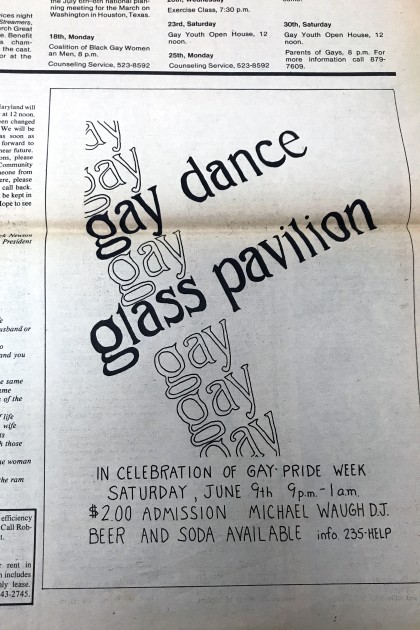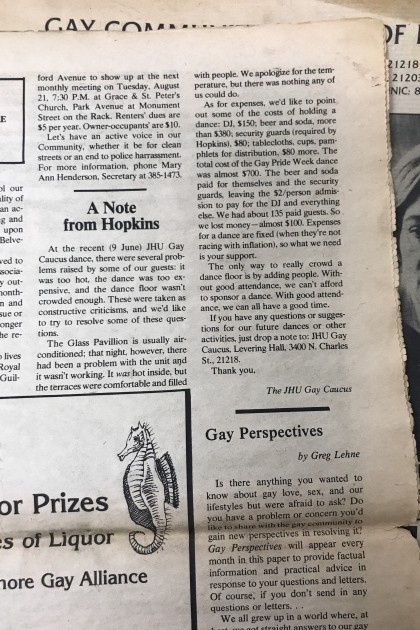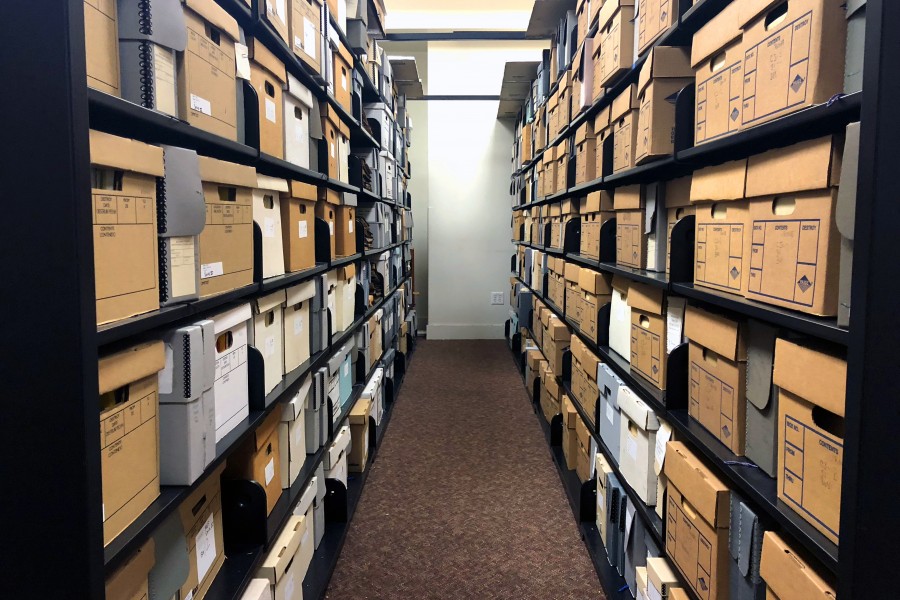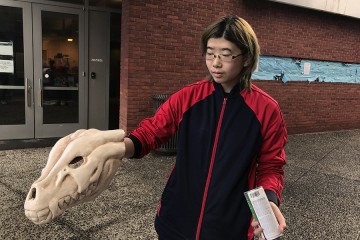In a room that smells like a musty basement with a hint of mothballs, boxes of photos, records, and newspaper clippings fill shelves that seem to reach the ceiling. In the corner sit the signs from the women's 31st Street Bookstore—now the home of Normal's Books and Records—and from The Hippo, a popular club in the Baltimore gay community that closed in 2015.
These archives at the University of Baltimore include a collection of records that tell stories of the city's "gayborhoods," cultural districts where lesbian, gay, bisexual, and transgender community members have lived and congregated throughout Baltimore's history. In the Intersession course "Gayborhood" Histories, Johns Hopkins University students examined these documents in hopes of piecing together a timeline of the LGBTQ community in Baltimore and learning more about the intersections of race, class, and gender.
This was the second year that Mo Speller, a JHU doctoral student, taught the class, which included neighborhood tours, readings, short reflections, and a group project in which students explored Baltimore's heritage. In addition to learning about the history of Baltimore's gay community and the urban spaces that served as its landmarks, students also learned how to work with archival resources.

Image credit: University of Baltimore Special Collections
The course provided a unique opportunity for students to sift through unprocessed documents that weren't digitally accessible, without knowing what they might find, Speller said.
The Hopkins students were the first to work with the Gay, Lesbian, Bisexual and Transgender Community Center of Baltimore and Central Maryland's organizational files from the archives. They learned about the breadth of the Baltimore gay community and how Johns Hopkins University students and groups supported it through the years.
"I never knew that the Charles Village, Waverly, Hopkins area was so instrumental to the gay movement in Baltimore," said Ashley Newsum, a senior behavior biology major.
The class learned, for example, that the Glass Pavilion on JHU's Homewood campus was often the site of dances that raised funds for gay community services. Dances featured DJ Michael Waugh, a local celebrity who also DJed for gay cruise parties that departed from the Inner Harbor.
In the 1970s, The Johns Hopkins News-Letter office was the original home of the Gay Student Alliance. And next to what is now Charles Commons, the Current Rage Salon once held a haircut benefit for the Gay Community Center.
"I've never been to an archive before and didn't really know what to expect," Newsum said. "All of the newspapers and materials we were able to work with were so interesting and gave you a glimpse into the past of what it was like to be a queer person in the city of Baltimore."
The "Gayborhood" Histories course attracted students of all class years and a variety of majors who wanted to learn more about Baltimore history and LGBTQ culture in the city.

Image credit: UNIVERSITY OF BALTIMORE SPECIAL COLLECTIONS
Sonomi Oyagi, a JHU first-year student who intends to major in neuroscience and international studies, was part of a class group that found clippings from the Baltimore Gay Paper featuring "A Note from Hopkins" about a JHU Gay Caucus dance.
"I learned an incredible amount about the history of the gay rights movement in Baltimore and the progression of Pride in Baltimore from a block party to a … popular, family-friendly festival," Oyagi said.
In addition to history, the class discussed conflict within the LGBTQ community. Speller said that some students were surprised to learn about the community's internal struggles, such as racism, sexism, and transphobia.
"I think that one of the greatest things that I have gained was perspective about the intersections of race, class, and sexuality in the queer communities in Baltimore," Newsum said, "and how that really shifted the direction and movement of the Gayborhood."
Posted in Student Life
Tagged baltimore, lgbtq life, intersession










